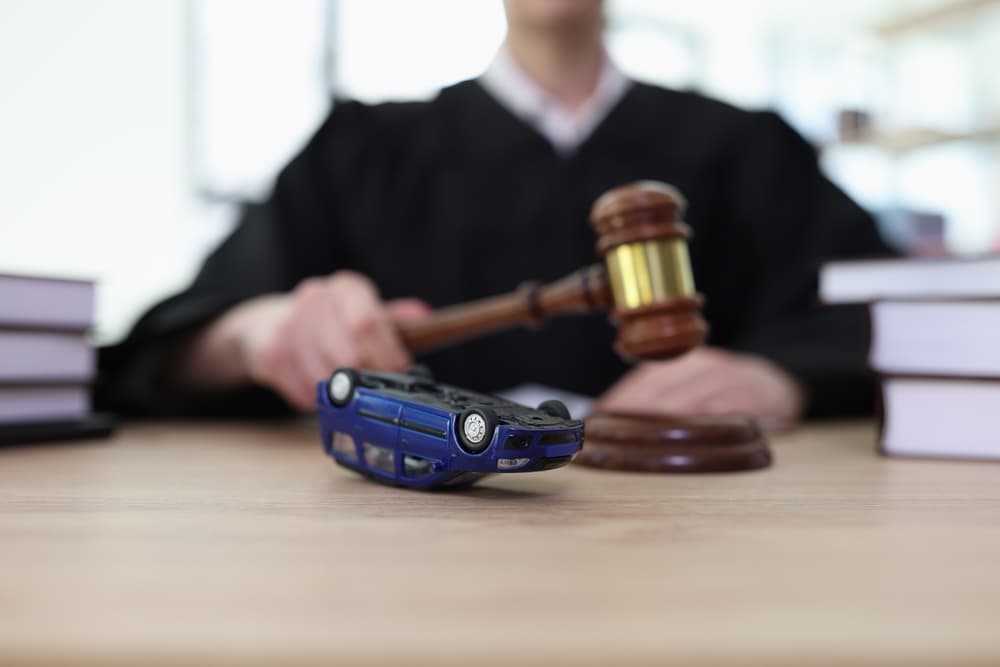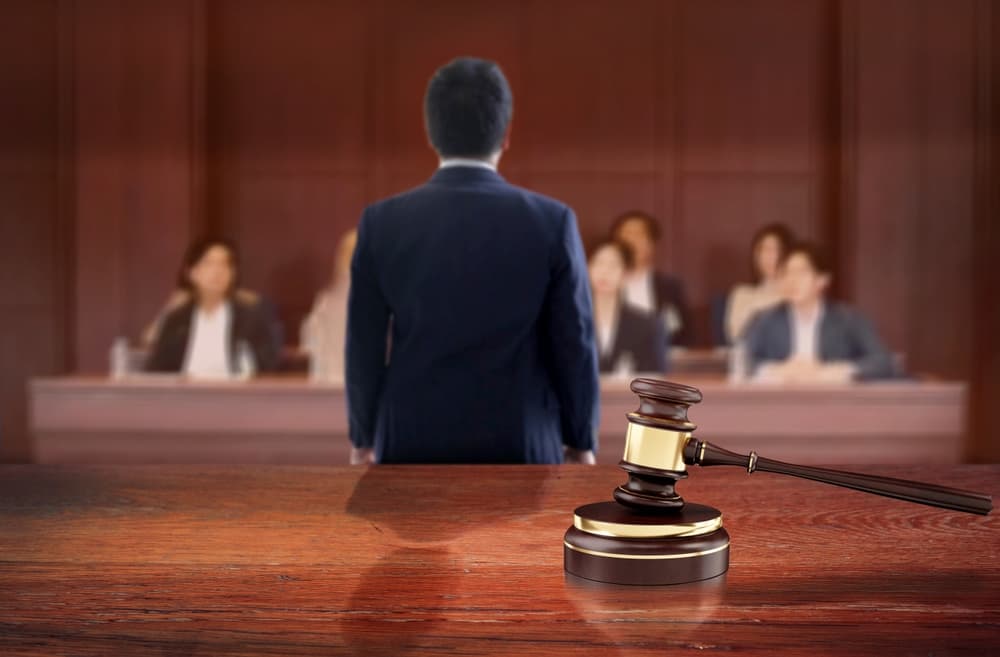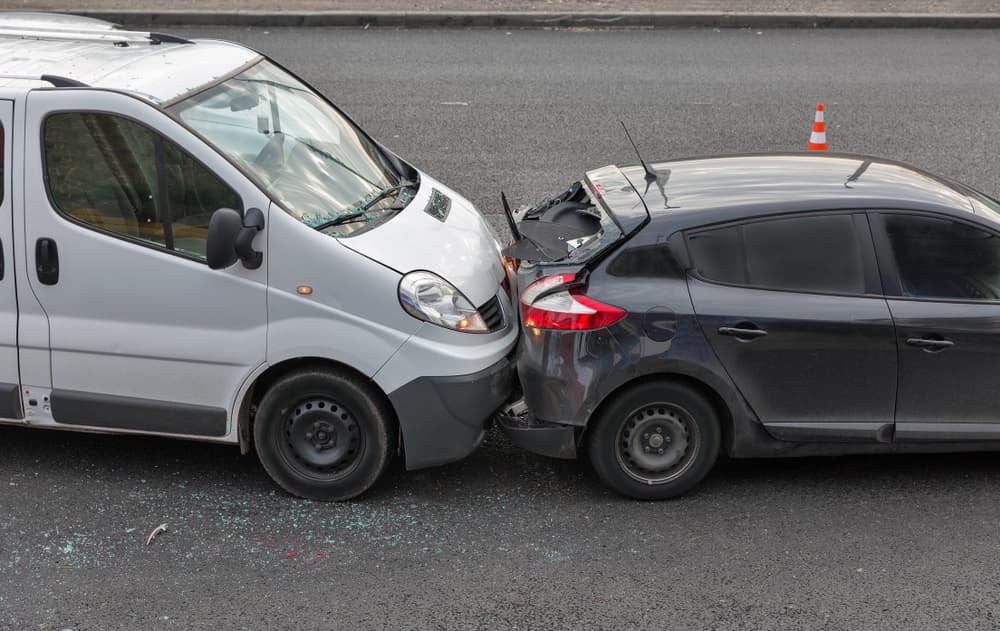Car accident victims who sustain injuries due to someone else’s negligence may be eligible for several types of settlement compensation in a personal injury claim or lawsuit. The amount of money you should ask for in a settlement demand letter will depend upon a range of factors, including the extent of your injuries, the specific circumstances surrounding your car accident, and the specific type of car accident that occurred.
A knowledgeable car accident attorney in your area can assess your car accident circumstances and come to a valuation for your personal injury claim or lawsuit. Your attorney can then take the steps necessary to secure the financial recovery you need for your injuries.
Types of Driver Negligence That Frequently Lead to Car Accidents

Driver errors are frequent catalysts for various types of car accidents, each presenting unique challenges and risks on the road. Sideswipe accidents, often due to driver inattention or distraction, occur when a vehicle traveling in one lane collides with the side of another vehicle in an adjacent lane. These incidents commonly happen when drivers fail to check blind spots, change lanes abruptly, or divert their attention to mobile devices.
Head-on collisions, one of the most severe accidents, often result when drivers drift into oncoming traffic lanes. Factors such as drowsy driving, impaired judgment due to substances, or misjudging overtaking maneuvers contribute to these catastrophic accidents. Head-on collisions demand a comprehensive understanding of road conditions, proper signaling, and constant attention to prevent the dire consequences of crossing into opposing traffic.
Rear-end accidents stem from tailgating, sudden deceleration, or distracted driving. Drivers who follow too closely and fail to maintain a safe stopping distance are prone to rear-end collisions, especially when quick stops are necessary. Distracted driving, often involving texting or adjusting in-car systems, can lead to delayed reactions and rear-end collisions.
T-bone accidents, also known as side-impact or broadside collisions, occur when the front of one vehicle collides with the side of another. Often happening at intersections, these accidents result from violations of traffic signals or failure to yield the right-of-way. Disregarding stop signs or running red lights are common errors leading to T-bone accidents, often resulting in severe injuries due to the vulnerable side impact.
Driver errors contributing to these accidents are frequently rooted in common themes such as distraction, impaired judgment, failure to adhere to traffic signals, and insufficient awareness of surroundings. If you suffered injuries in a car accident that a negligent driver caused, an experienced personal injury attorney can pursue legal action on your behalf by filing a claim with the at-fault driver’s insurer and negotiating for the settlement compensation you deserve.
Consequences of Various Injuries in a Car Accident
In the aftermath of a violent car accident, the consequences of injuries sustained by drivers and passengers are profound, affecting both physical well-being and overall quality of life. Head injuries, a common outcome of severe accidents, can lead to traumatic brain injuries (TBIs), resulting in cognitive impairment, memory loss, and long-term neurological challenges. These injuries may necessitate extensive medical treatment, rehabilitation, and adjustments to daily life.
Spinal injuries, often associated with high-impact collisions, can lead to paralysis or varying degrees of mobility impairment. The severity of spinal injuries can profoundly alter an individual's independence, requiring adaptive measures and ongoing medical care to cope with the lasting effects.
Fractures and broken bones are frequent consequences of car accidents, affecting limbs, ribs, and other skeletal structures. Recovery from fractures may involve surgeries, extensive physical therapy, and prolonged periods of limited mobility. The effect on one's ability to perform daily activities can be substantial, influencing work, personal life, and overall well-being.
Soft tissue injuries, including muscular sprains, strains, and contusions, may seem less severe but can result in persistent pain and restricted mobility. Whiplash, a common soft tissue injury, can cause neck and back pain, headaches, and prolonged discomfort. The chronic nature of these injuries may require ongoing medical care and affect an individual's ability to engage in regular activities.
Internal injuries, such as organ damage or internal bleeding, pose hidden threats that may not be immediately apparent. These injuries can be life-threatening and demand urgent medical attention. The consequences may extend to long-term health complications and the need for continued medical monitoring and intervention.
Psychological repercussions are an often overlooked aspect of post-accident injuries. The trauma experienced during a violent car accident can lead to anxiety, depression, and post-traumatic stress disorder (PTSD). Emotional distress may affect daily functioning, relationships, and overall mental well-being, necessitating therapeutic interventions and psychological support.
Chronic pain syndromes can also emerge from car accident injuries, persisting long after the initial impact. Conditions like complex regional pain syndrome (CRPS) can significantly reduce the quality of life, requiring ongoing pain management strategies and medical care.
The consequences of injuries sustained in a violent car accident frequently extend far beyond the immediate aftermath. They permeate various aspects of life, affecting physical health, mental well-being, and the overall ability to lead a normal life. Recognizing and addressing these consequences requires comprehensive medical care, rehabilitation, and support systems to help individuals navigate the challenges posed by the aftermath of a violent car accident.
What Factors Determine the Final Amount of a Car Crash Settlement?
Many factors influence the final amount of a car accident settlement, weaving together a complex tapestry that reflects the unique circumstances of each case. One pivotal aspect is the extent of injuries sustained in the accident. Severe injuries often result in higher settlements due to medical expenses, ongoing treatment, and potential long-term effects on the individual's life.
Moreover, liability plays a crucial role in determining settlement amounts. Establishing who is at fault can significantly affect negotiations. If one party is clearly responsible for the accident, their insurance may bear the brunt of the settlement costs.
Witness statements and evidence also shape the settlement outcome. Strong supporting documentation, such as accident reports, medical records, and expert opinions, can bolster a claim and potentially lead to a more favorable settlement. Conversely, a lack of compelling evidence may weaken the case and result in a less substantial settlement.
In addition, the role of insurance coverage can affect the settlement outcome. The policy limits of the at-fault party's insurance can impose a cap on the settlement amount. Low policy limits may hinder the ability to cover extensive damages, leaving the affected party with a less satisfactory settlement.
Besides that, economic damages, encompassing medical bills, property damage, and lost income, form a critical component of settlements. Calculating these costs accurately is vital, as they directly contribute to the negotiation process. Non-economic damages, such as pain and suffering, emotional distress, and loss of consortium, introduce a subjective element that can also influence the final settlement.
Legal representation is another key variable in the settlement equation. A skilled attorney can adeptly navigate negotiations, advocate for their client, and assess the true value of the case. Their experience often results in more favorable settlements than those without legal counsel.
Finally, the case jurisdiction can affect settlement amounts. Regional legal nuances, jury verdict trends, and local laws all contribute to the unique landscape of each jurisdiction, shaping the potential outcome of a car accident settlement.
The final settlement amount emerges from the unique interplay of these multifaceted factors, each contributing to the resolution of a complex legal puzzle.
What Are Some Instances Where Litigation May Become Necessary in a Car Accident Case?
Litigation in a car accident case becomes necessary under different circumstances, typically when attempts to reach a fair settlement prove unavailing. One primary trigger for litigation is a dispute over liability. When the parties involved cannot agree on who is at fault for the accident, legal action becomes essential to allow a court to assess the evidence, determine liability, and allocate damages accordingly.

In cases where insurance companies fail to offer reasonable settlements, you may pursue litigation to compel a fair resolution. Insurance adjusters may undervalue claims or dispute the extent of injuries, prompting the affected party to seek judicial intervention to ensure they receive fair and rightful compensation.
Furthermore, complexities surrounding multiple parties or shared-fault scenarios often lead to litigation. Determining each party's degree of responsibility can be complicated when an accident involves more than one party. Disputes may arise regarding the apportionment of liability, necessitating court involvement to establish a fair distribution of responsibility and corresponding damages.
Inadequate insurance coverage can also propel a car accident case toward litigation. If the at-fault party has insufficient insurance to cover the full extent of damages, the injured party may pursue litigation to seek additional compensation. This situation commonly occurs when severe injuries or extensive property damage surpass the responsible party’s policy limits.
Disputes over the valuation of economic and non-economic damages frequently precipitate legal action. Insurance companies may contest the extent of medical expenses, lost income, or non-economic damages like pain and suffering. Litigation becomes a means to present evidence and arguments formally, allowing a judge or jury to assess the validity and value of the claimed damages.
Moreover, when negotiations break down due to fundamental disagreements on legal principles or interpretation of the law, litigation emerges as the pathway to resolve these disputes. Legal issues such as coverage interpretation, liability laws, or complex legal precedents may necessitate a court's guidance for a comprehensive resolution.
Finally, when alternative dispute resolution methods, such as mediation or arbitration, fail to yield a satisfactory outcome, litigation becomes the last resort. If the parties cannot find common ground through less adversarial means, the formalized structure of a courtroom provides a framework for a binding resolution.
The complexities, disputes, and impasses that arise during the negotiation process often precipitate the decision to pursue litigation in a car accident case, to secure a just and equitable resolution in the eyes of the law.
Economic and Non-Economic Damages Following a Car Accident
In the aftermath of a car accident, individuals seeking compensation may recover both economic and non-economic damages through various legal avenues such as settlements, jury verdicts, or alternative dispute resolution (ADR) awards.
Economic damages form the tangible, quantifiable losses incurred due to the accident. Medical expenses, a significant component of economic damages, encompass costs related to hospitalization, surgeries, medications, rehabilitation, and ongoing treatments. Property damage, covering the repair or replacement of the vehicle, is another facet of economic damages, ensuring that the affected party receives reimbursement for the financial effect on their vehicle. Lost income represents another crucial economic component. If the accident leads to injuries that hinder the ability to work, individuals can seek compensation for the income they would have earned during their recovery period. Future earning capacity may also factor into economic damages if the injuries result in long-term or permanent impairments that affect the individual's ability to work and earn a living.
On the other hand, non-economic damages pertain to intangible losses that are challenging to quantify in monetary terms. Pain and suffering, a common non-economic element, encompasses the physical and emotional distress experienced due to the accident and its aftermath. This may include the trauma, anxiety, and diminished quality of life resulting from the injuries sustained. Emotional distress extends beyond pain and suffering, addressing the psychological repercussions of the accident. Individuals may seek compensation for anxiety, depression, sleep disturbances, and other emotional hardships caused by the traumatic event. Loss of consortium is another unique non-economic damage that pertains to the negative effect on the relationship between spouses or family members. If the accident results in a diminished ability to maintain normal family relationships, individuals may seek compensation for this loss.
In some cases, the injured might be eligible for punitive damages as well. Unlike compensatory damages meant to reimburse the victim, punitive damages aim to punish the at-fault party for egregious conduct, such as recklessness or intentional harm. However, punitive damages are not always available and are subject to legal standards and limitations.
Whether through settlement negotiations, a jury verdict, or an ADR award, the compensation sought in the aftermath of a car accident reflects the intricate interplay of these economic and non-economic damages, striving to address the holistic effect of the incident on the lives of those involved.
Speak to a Car Accident Lawyer in Your Area Right Away
A knowledgeable personal accident lawyer in your area can determine the value of your car accident claim or lawsuit, depending upon the nature and extent of your injuries and other related factors. Your attorney can file a claim on your behalf with the appropriate insurance company or litigate your case to the court system to maximize the financial recovery you ultimately receive.



